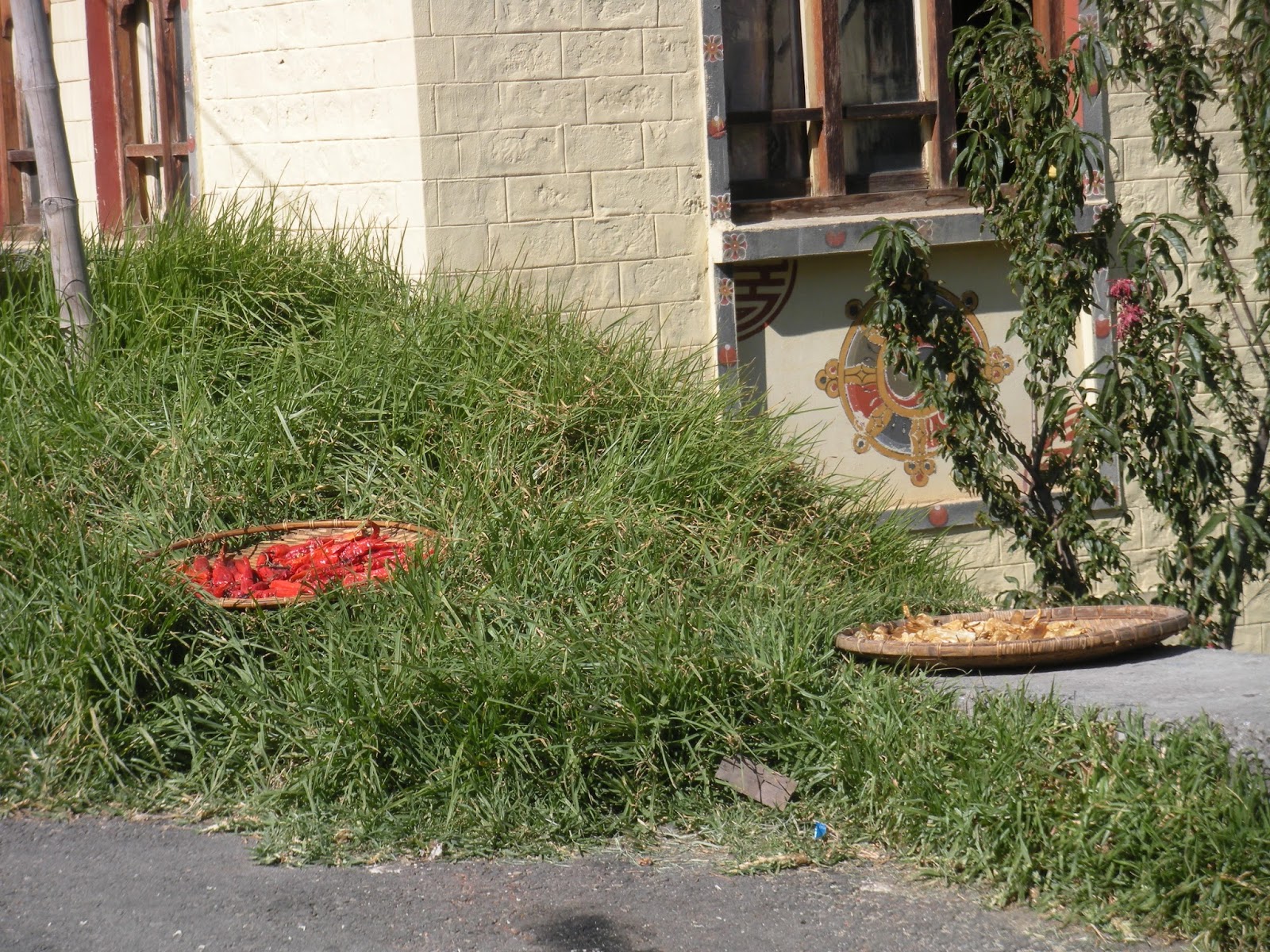 Bhutanese famously think of chilies as a vegetable and not a spice, every meal requires them. Unsurprisingly chilies are grown in every single district or dzongkhag in Bhutan, thought of course as this article put out by the agriculture ministry points out, climate and elevation differences mean that there is necessarily a lot of variety in the types of chilies grown. Chilies are grown both for personal family consumption and to sell in the local market.
Bhutanese famously think of chilies as a vegetable and not a spice, every meal requires them. Unsurprisingly chilies are grown in every single district or dzongkhag in Bhutan, thought of course as this article put out by the agriculture ministry points out, climate and elevation differences mean that there is necessarily a lot of variety in the types of chilies grown. Chilies are grown both for personal family consumption and to sell in the local market. Unsurprisingly chili is one of the most commonly dried "vegetables" in Bhutan. In the past when transporting vegetables was difficult this was an important way of insuring a year long supply. Times have changed and fresh chilies are available year long but Bhutanese still choose to dry some of their supply.
According to Kunzang Choden in her book " Chilli and Cheese: Foods and Society in Bhutan" sun drying is still the most common way to dry chilies. She also make the following observations about the colors of dried chilies :
"Mature chilies, which begin to get a tinge of red coloration, easily turn read when sun dried. Green chilies split in half and sun dried retain their color so they are green even when dried. The biggest chilies are selected and blanched by immersing them for some minuets in a pot of boiling water and then drying them in the sun. These chilies become a yellowish creamy color when dried and are known as shur kam ( boiled and dried or white chilies). The colored chilies preserved in different ways not only add color to the dishes but also widen the possibilities of different tastes and textures."
Below are some picture I took in the fall and winter of chilies being dried in my own neighborhood.












No comments:
Post a Comment